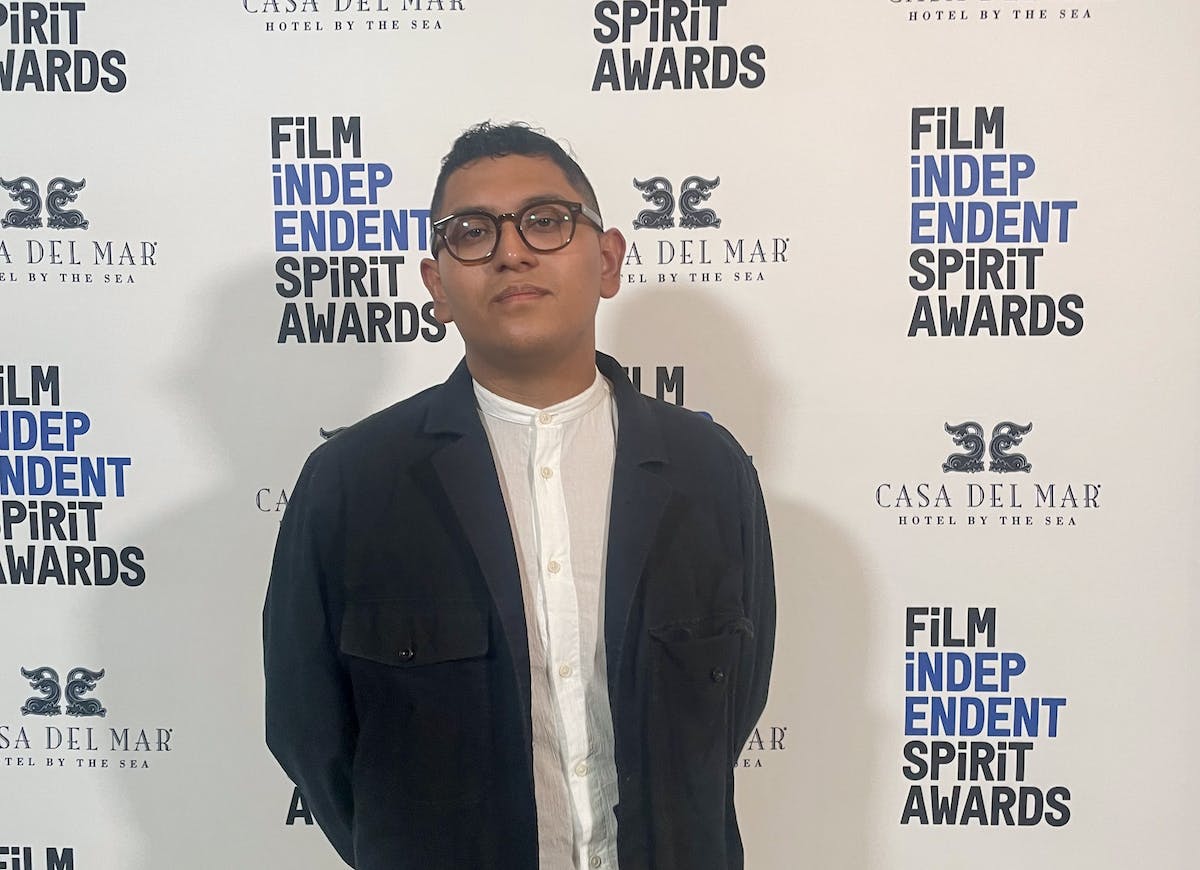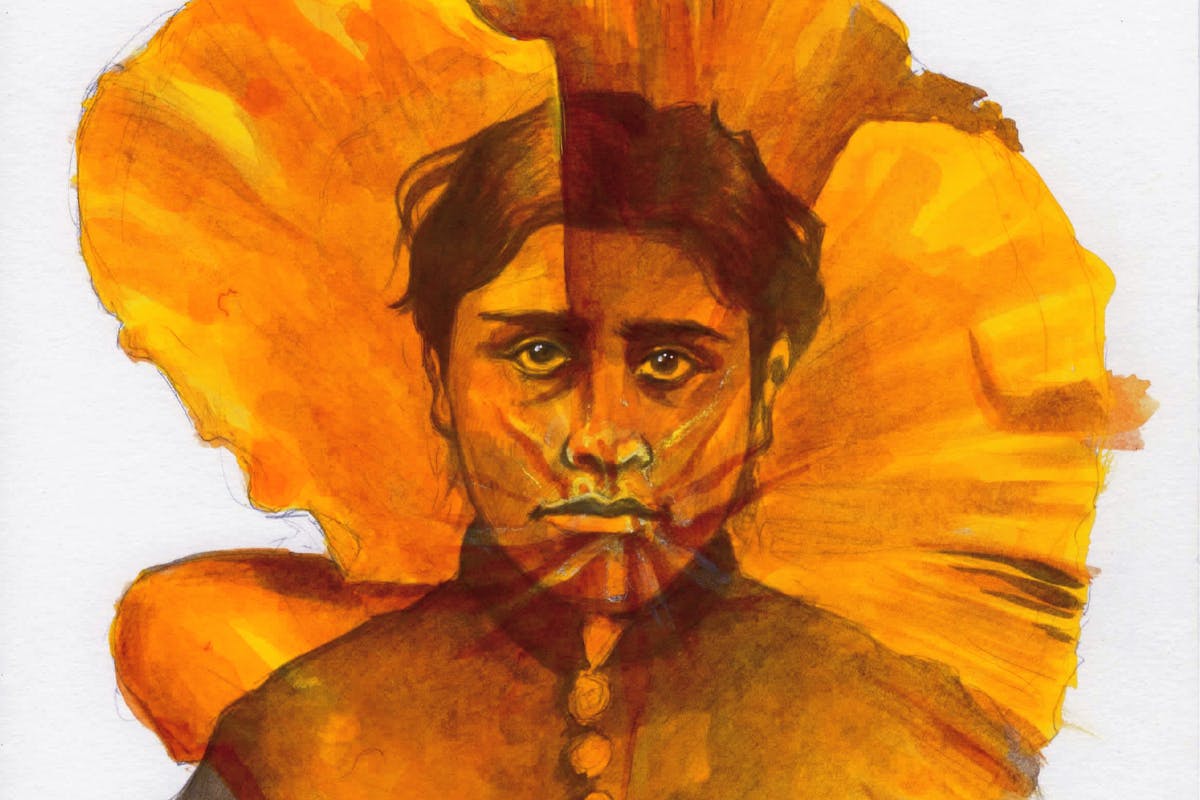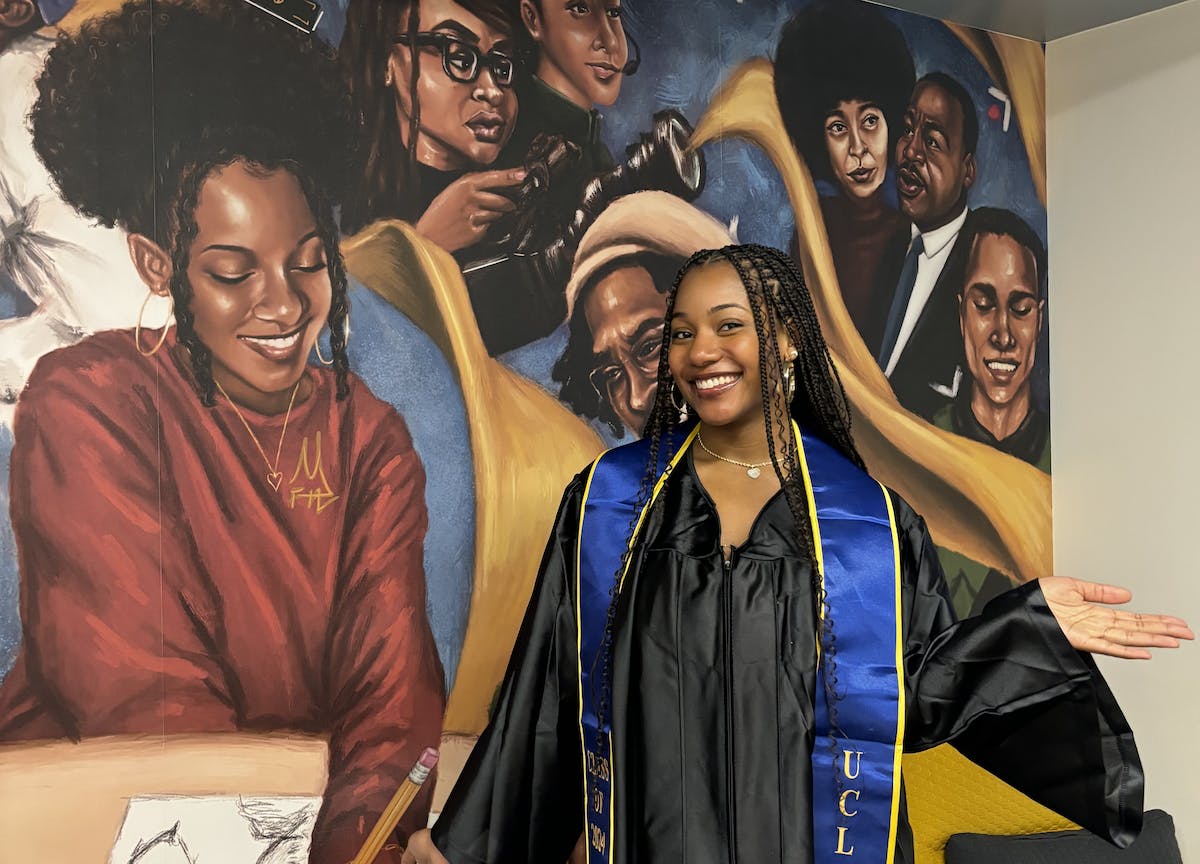Pedro Murcia: Championing socially conscious cinema

Pedro Murcia is using his approach as a community-engaged filmmaker to put his small hometown of Puerto Barrios, Izabal, Guatemala on the map, and building a bridge between U.S. and Latin American cinema.
His ties to UCLA began long before he entered the production/directing MFA program at the School of Theater, Film & Television, which he will graduate from this week.
Murcia was the first enrolled student at Cinema School at Francisco Marroquín University in Guatemala City where he studied under UCLA alum Justin Lerner. The two partnered to create “Cadejo Blanco,” a critically acclaimed film about a young woman who infiltrates a gang to rescue her kidnapped sister, written and directed by Lerner and co-produced by Murcia. The film was released during Murcia’s third year at UCLA and nominated for a 2024 Film Independent John Cassavetes Award, given annually to the writer, director and producer of the best feature made for under $1 million.
“We started seeing the impacts of that film while I was a student at UCLA, so I got to live a really crazy experience,” he said. “It came out in theaters in the U.S. in L.A., in New York City, all around Europe, Latin America. It was a really good experience for me being a film student and having a film already playing in theaters and doing well. So it was like the best of both worlds.”
Murcia was recently recognized with an honorable mention in the second-annual Class Artist competition sponsored by UCLA’s Chancellor’s Council on the Arts. He is honored for a short film he wrote, produced and directed during his time at UCLA titled “Azul,” about a young man who juggles life between working as street vendor in Guatemala City and raising his younger brother.
“I knew that I wanted to shoot something in Guatemala City where I studied film originally and because I also saw it as a challenge,” he said. “I’ve always been passionate about social stories, I'm a very socially conscious person and spent a lot of time talking to people and earning their trust.”
As a narrative filmmaker, Murcia believes in reflecting reality by using non-professionals as actors as often as possible. The lead actor in “Azul,” Enrique Salanic is something of a star in Latin America and is one of the only Maya K’iche’ gay actors in Guatemala. But the younger boy in the film is the brother of an actual street vendor who lives and works in Guatemala City. Murcia’s research and interviews discovered the young soon-to-be-actor as he learned about the challenging conditions that street vendors face navigating criminal gangs in the areas where they sell their wares.
Meanwhile, the idea for “Cadejo Blanco” was, in part, inspired in part by Murcia’s father’s work offering pro bono legal services to help former gang members in Guatemala. With that in mind, Murcia visited his hometown for some street casting.
There are only three professional actors in that film, Murcia said, including Brandon Lopez, Karen Martinez (who was honored with the Un Certain Talent Award at the Cannes Film Festival) and Juan Pablo Olyslager, a well-known Guatemalan actor.
“The rest of the people in the film were nonprofessionals that I basically brought out of the street,” he said. “I just drove around town, I would see people, I had an image of how I thought the director will see them and I would stop people on the street and say, “hey so we're shooting a film in Puerto Barrios. I like the way you look. If you want, you can come to a casting.”
Murcia and his filmmaking partners used his parents’ law offices as a casting office, and once the final selections were made, invested in acting coaches and training before the film was shot.
Tenacity has been the watchword for Murcia from the beginning. Though he originally planned to study journalism or communications (and even though as a teenager his father bought him a book about what to expect from law school) when word that the first film school in his country would be opening soon, something clicked. He called, he emailed, he visited in person–basically ensuring he was the first person to apply, get accepted and graduate with a degree from Cinema School at Francisco Marroquín University.
That tenacity is paired with a demonstrated love of the art form, and a vibrant curiosity about the powerful social statements a film can make, both with its on-camera narrative and behind-the-scenes approach. Murcia and the “Cadejo Blanco” filmmakers used some of the international distribution proceeds to partner with a foundation called Movimiento de Esperanza.
“Some of the proceeds we used for film scholarships for kids who were part of the film and a lot of them are going to the same film school that I went to in Guatemala City,” he said.
Murcia is proud that his first film, finished just before the pandemic broke, has also seemed to inspire a bit of an independent film industry in his hometown.
He’s looking ahead to his next projects and would like to shoot in Guatemala and Puerto Barrios again, with a keen eye toward socially conscious stories.
“That’s the only type of films that I want to do,” he said. “And I believe that we're living in the golden age of Latin American films. There's a lot of stories that are worth telling in Latin America and me specifically, being from Guatemala. It's like a mine of gold for stories and talent. Best-case scenario, I would like to create a bridge of co-productions between the U.S. and Guatemala for people to get funding from the U.S. and shoot films in Guatemala.”
Story by Jessica Wolf
Posted 06.12.24
Header Image: Pedro Murcia on the Film Independent red carpet. Image courtesy the artist.

